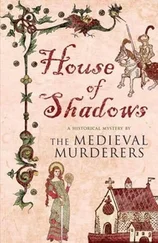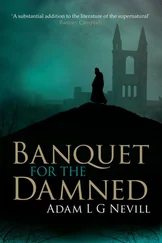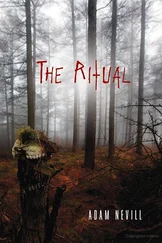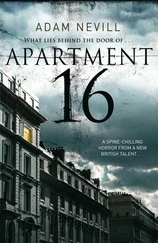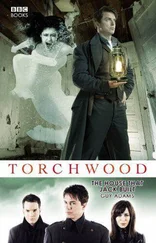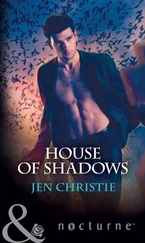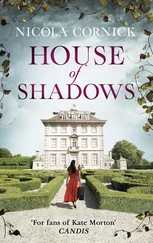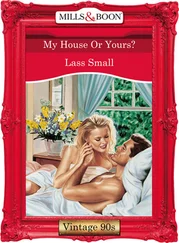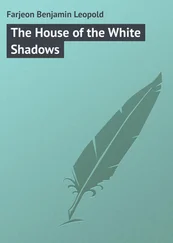This was to be a private performance that Edith and the projectionist did not wish to see. Their departure from the room had been swift. Maybe they were bored of it. The film appeared to be one of few entertainments in the Red House, so the household may already have watched it to death. But as Catherine wondered whether Edith had ever known television, or radio, or music in her life, her attention was seized by the activity on-screen.
If the opening shot was a statement of intent, Catherine would have been happy to miss all of what followed the first image, filling the length and breadth of the screen. A smiling face of painted plaster, in black and white.
Dropout, flickers and degeneration of the film suggested it had been made much earlier than the fifties, as did the absence of sound. The eyes in the face on-screen must once have been intended to convey delight, or a cheeky joy, but their expression had faded. Rounded babyish features, including rouged cheeks, were networked with black cracks. The nose was gone. In its place was an ugly hole. The dim, immobile grin suggested a cruel delight at the viewer’s shock.
The hair resembled a clumsy toupee, a modern clownish addition, lacquered or greased either side of a central parting. It was an old head and probably manufactured before Mason’s time, but Catherine had dreamed of something similar before. In her memory, it jerked awake a sense of something from her trances about the children of the special school. And had this marionette been concealed beneath bedclothes in the nursery that morning too? When she recalled the mop of curly black hair upon a pillow, she winced. The comparisons made her flutter with panic, then frown with incredulity, before considering the absurd possibility of a connection between the film and her hallucinations and trances. A connection she quickly dismissed. At one time ventriloquist dummies and male puppets all had that kind of head, nor was the hairstyle uncommon. She’d seen a bonnet in the nursery, too, but female dolls from the 1880s also wore bonnets. Though what had first put such figures and images into her imagination as a child still baffled her.
The camera withdrew and the remainder of the figure was revealed. Catherine shifted upon her seat. The neck ruffle and tatty velvet jacket signified Tudor stylings, but the legs were pure M. H. Mason. The hind legs of a large dog supported the upper body of the figure, which began to soundlessly clap its chipped wooden hands as it withdrew to the side of the stage.
Unsteady, tottering, but with a rotation of the hips that was uncomfortable to watch, the movements of the figure were reminiscent of a circus dog trained to walk upon its hind legs. Catherine thought she saw strings, but then the bright flickers may also have been flashes of dropout on damaged film stock.
A curtain was drawn back to the wings of what she realized was the very same stage at the head of the room she faced. But in the film the stage backcloth depicted a dungeon in great detail, replete with wet stones and a solitary barred window. Pieces of wooden scenery had rolled down from above.
Hung in chains, a bedraggled, limp figure struggled to raise its wooden head and look at the camera. The face was stained with a dark fluid and the features were partially obscured. But what she could see of the carven face was neatly bearded, like an Elizabethan man. The figure’s countenance was sad but noble, if not regal, and made her think of both Christ and King Charles I.
About the sombre refined face, dark and luxuriant curls fell across a soiled linen blouse. A pair of tattered leggings completed the outfit. The carven feet were large, exaggerated, hoary.
The head tilted and moved as if it spoke. If there had been sound on the film perhaps the prisoner would have been imparting its woes, though Catherine found herself relieved the audio track was absent.
The curtains closed. Then reopened.
In the second scene, the imprisoned figure appeared even more wretched and mournful in appearance as it stood in the wooden dock of a court or aged public building. There was a second character onstage for this scene. A monstrous hare which gesticulated aggressively with its thin forelegs. Large and entirely white eyes dominated the hare’s head. Remnants of whiskers bristled around an open black mouth that boasted small teeth. She must have just seen its foul head in a nursery bed too.
Its sagging body stretched out of a small wooden box that doubled as a pulpit. The fur of the chest was patchy and worn and revealed two lines of pale teats. The hare wore a black cloth or silken headdress, and must have been presiding in judgement over the man who remained the only distinctly human figure in the scenes that followed.
Once the curtains reopened after the trial scene, the action of the play had moved to a murky refuse-strewn street scene, with churned mud and slouching wooden houses artfully suggested upon the backcloth. The prisoner was now mounted upon a cartwheel, over the rim of which his tired but proud wooden face hung.
The scenery may have changed, and though well painted, the new backcloth added the only reassuringly artificial aspect to the jerky, but unnervingly lifelike motion of the marionettes on stage. So authentic was their propulsion about the space, Catherine became convinced the film had been created with still-frame animation, not puppetry. After all, Edith’s memory could hardly be counted upon.
A motley crowd of figures dressed in rags paraded onto the stage from the wings and circled the cartwheel menacingly. Catherine caught glimpses of sackcloth and ceramic faces, wooden teeth, and animal ears. Several of the crowd had canine legs. Others moved on wooden limbs, their feet shod in pointed leather shoes.
Small white hands and the occasional bristled paw were thrown into the air to shake clubs. The crowd was stoked into an animal frenzy by the hare, which pranced and frolicked at one side of the stage. It was presiding over a second scene and appeared gleeful to do so.
With their scruffy backs to the audience, the rabble crowded about and obscured the man upon the cartwheel. Their thin arms rose and fell repeatedly as they assaulted the prisoner.
Catherine covered her eyes and only peered back intermittently through her fingers until the slaughter had concluded. The exhausted crowd of ruffians staggered away after an awful minute of eager violence.
The thin wooden limbs of the victim had been smashed. Splinters protruded through its scant garments and were dark and moist.
Catherine assumed that it was at this point in the performance of Mason’s cruelty play that the BBC director must have finally, perhaps reluctantly, realized the drama was not only unsuitable for children, but for anyone.
Despite the wear on the print, which now lightened and darkened as if the film was about to catch fire on the projector, Catherine struggled to watch as the broken figure was raised into the air by the mob. An evil crowd that struggled under the weight of the cumbersome pole upon which the wheel had been fixed.
The curtains fell. But didn’t remain drawn for long.
The lifeless, misshapen and wet figure reappeared still strapped to the cartwheel upon the upright stave. But high up, on centre stage, the pole was set against a backcloth that was either entirely black or craftily designed to reflect a cold nothingness. And she wondered again if that forlorn wooden face now issued a soliloquy to camera on the missing audio track, because although his body was terribly broken, the glass eyes of the long face were open.
Catherine longed for the end, but worse was in store.
In the next scene, against a return of the town’s backcloth, the anthropomorphic horde in rags returned to attend to the remains of their victim, who it seemed had been left to reflect overnight, beneath the featureless sky, on its tortured state. But this time the crowd approached the cartwheel in a representation of awe and reverence. They began to prod and study the broken man.
Читать дальше

